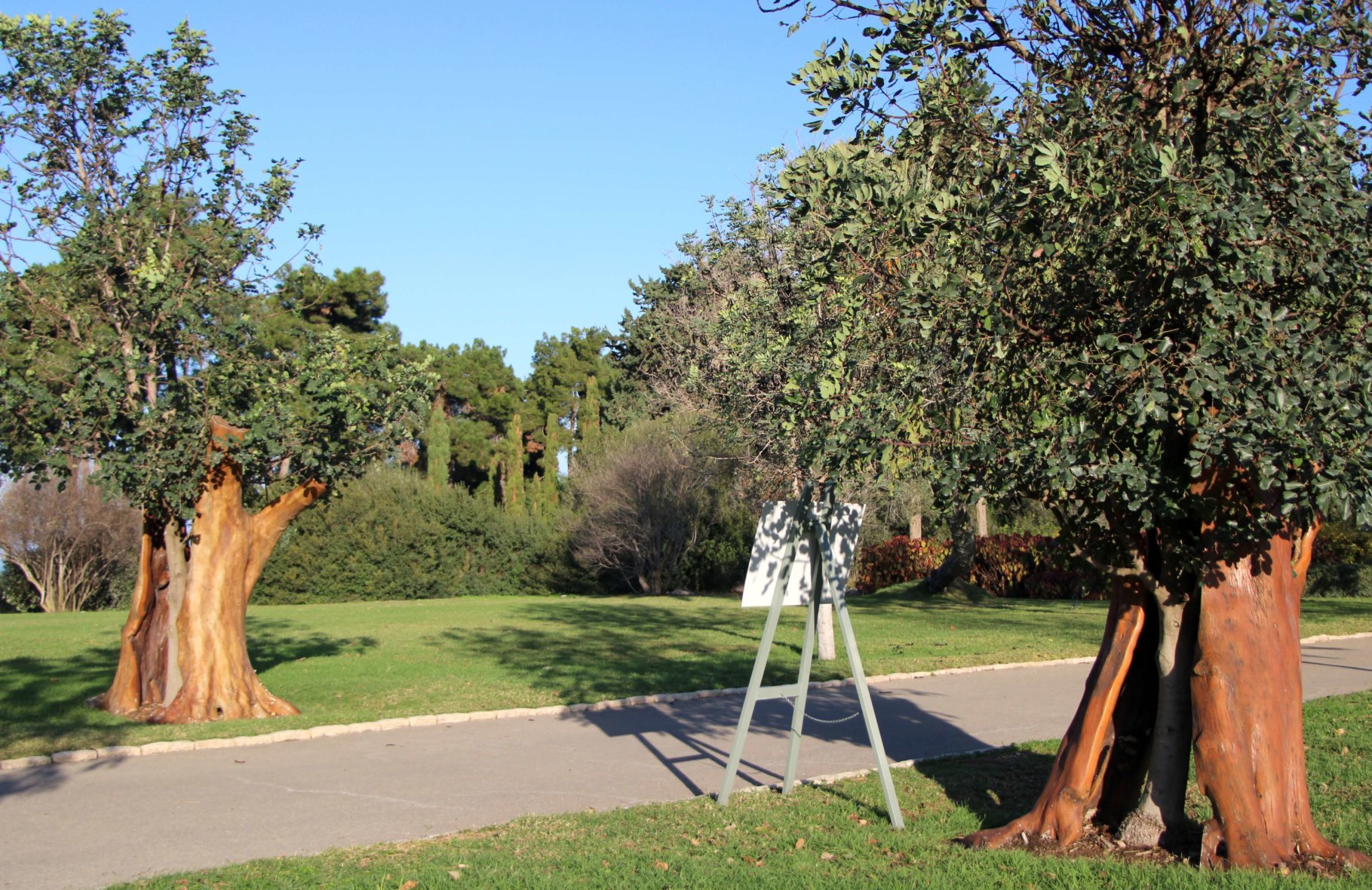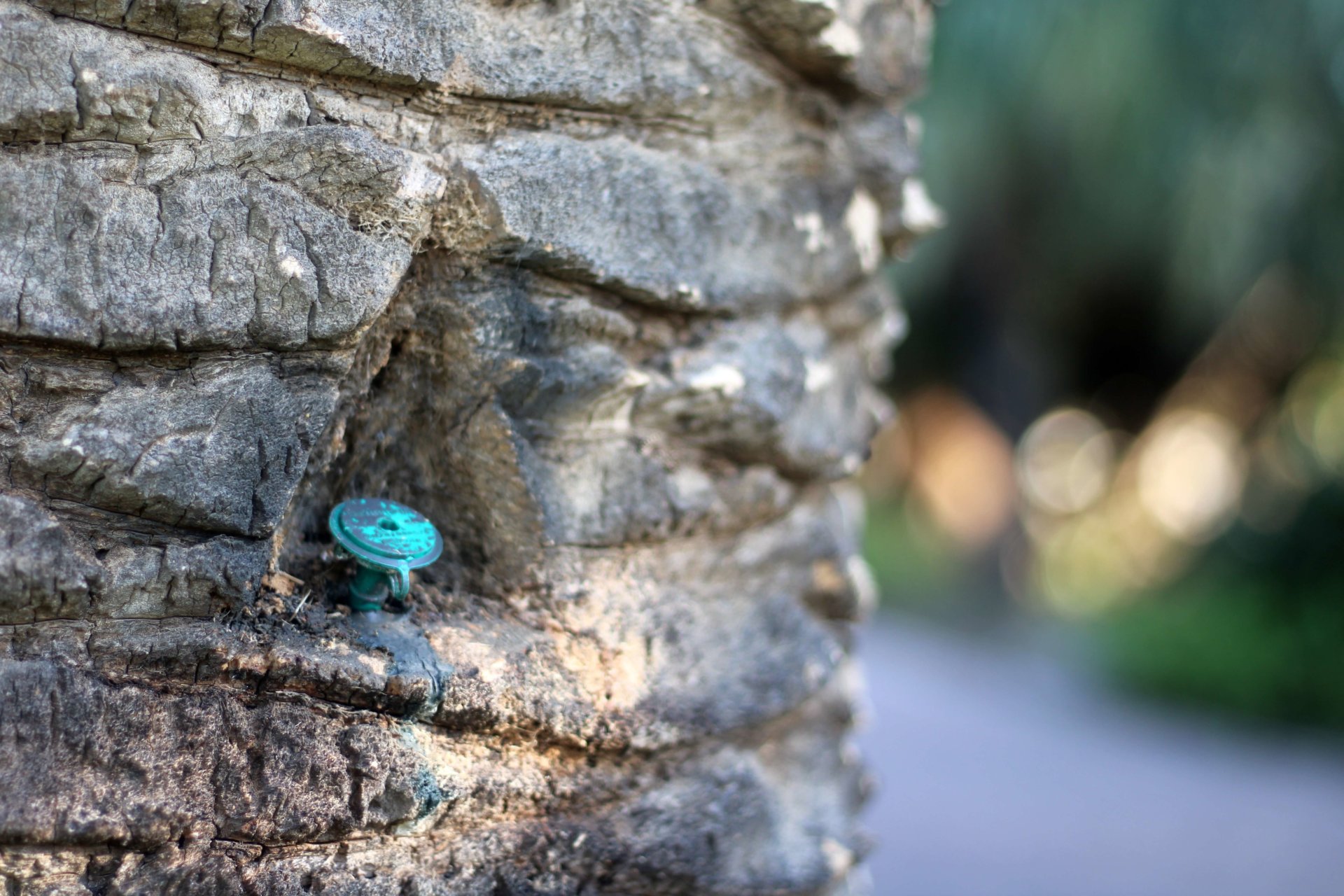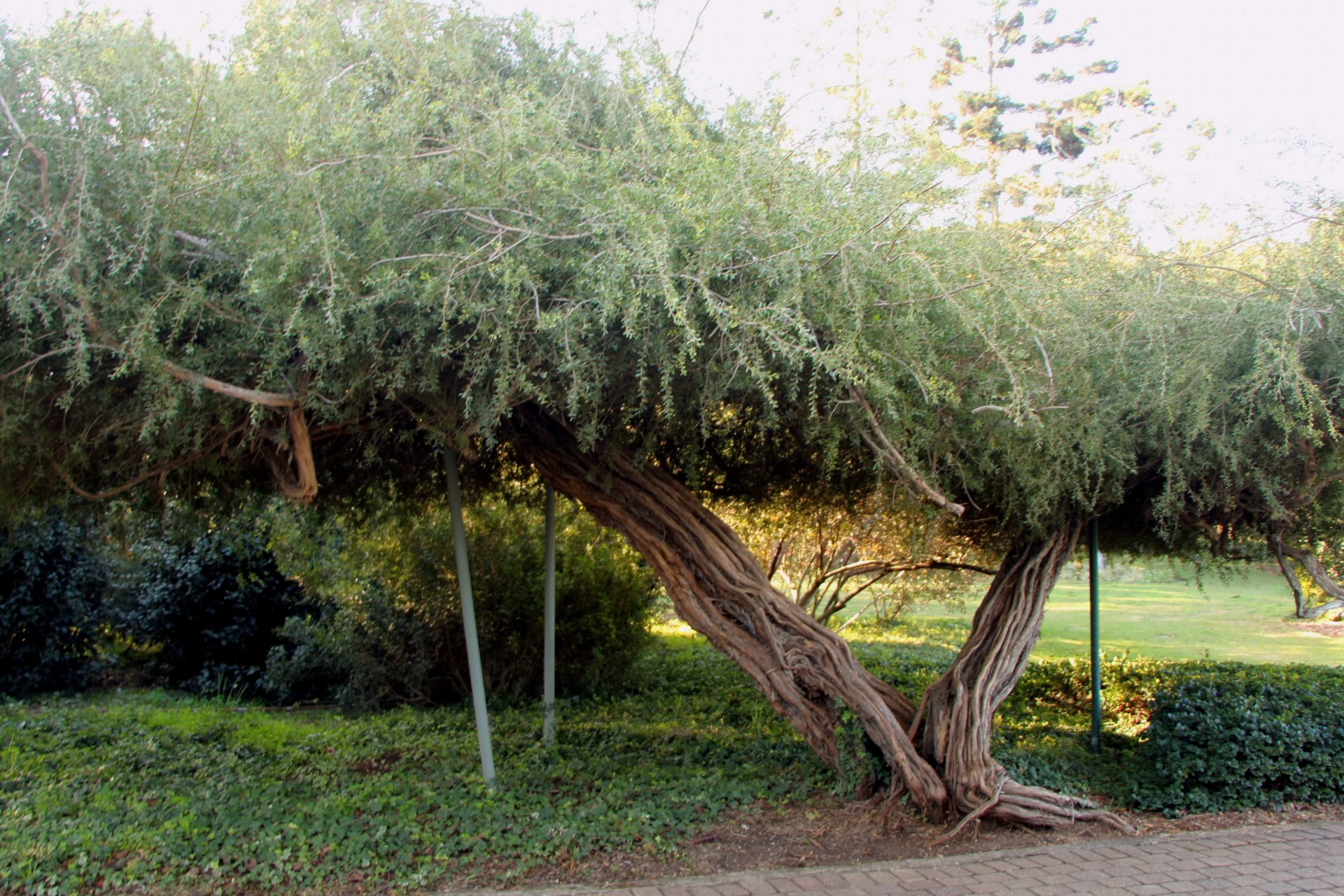On Trees and Treatment
Internal Ward A? Orthopedic Ward or even Geriatric Ward? What happens with injured, aging or sick trees at Ramat Hanadiv? Here’s a glimpse into the most pastoral treatment ward in the country.
 News and Events
News and Events
Internal Ward A? Orthopedic Ward or even Geriatric Ward? What happens with injured, aging or sick trees at Ramat Hanadiv? Here’s a glimpse into the most pastoral treatment ward in the country.

When Hugo, Shmulik, Lior and Ramat Hanadiv’s gardening staff saw the trunk of the leptospermum showing signs of splitting, they knew what to do. It turns out that just like people, sometimes trees need crutches. The story of the leptospermum is not unusual in the gardens. It turns out that trees often show signs of stress, due to age, structure and growth habit, parasites, or environmental causes. The gardening staff performs a routine “doctors’ round” each morning and gives each tree the unique treatment it needs until its complete rehabilitation and recovery.
A hug from a carob tree
When the gardens were established in 1954, an avenue of carob trees was planted along the main entranceway into the gardens. The irrigation and grass that surround them are not characteristic of the natural environment of the carob trees, which usually consume a smaller amount of water.
Thus, after several decades, the carob trees began showing signs of rot. When the gardeners saw the trees they realised they must find a solution that will maintain both the planning legacy and the safety of visitors walking the gardens’ trails, as well as honouring the old trees.
Much thought and love for the trees led to a special project in which the old trees were cut down and in their place new carob trees were planted. However, the gardeners retained the trunks of some of the old trees, so that visitors to the gardens would see the young carob trees surrounded by the embrace of the old trees, which remained in the avenue as a sign of respect to the past. Thus we were able to preserve the legacy and natural passing of the baton from the old generation to the young generation.

Visitors to the gardens would see the young carob trees surrounded by the embrace of the old trees, which remained in the avenue as a sign of respect to the past


An infusion for the palm tree
The red palm weevil (Rhynchophorus ferrugineus) is a beetle that causes significant damage to palms; the weevil’s larvae dig into the palms’ trunks, often leading to their death and collapse. Species that are particularly sensitive to the palm weevil include the Canary Island date palm and the date palm; these may be seen throughout the gardens, particularly in the palm garden.
After years of traditional treatment at Ramat Hanadiv, including spraying of the palm canopy, we began using “diklon” devices – a kind of direct transfusion to the palm trunk. This solution has proved to be highly efficient, more environmentally friendly (does not require a telescopic spraying rod and a large sprayer to reach the palm canopy, and there is no spray dispersing over the area) and the trees are able to live long lives and continue standing proud and tall.

And we, the visitors to the gardens, can only hope that when our time comes we will also be treated with devotion and lovingkindness as if we were the leptospermum at Ramat Hanadiv.


The leptospermum has crutches
When the coastal tea tree (Leptospermum laevigatum), an Australian shrubby tree from the Myrtaceae family, showed signs of collapse, the gardeners at Ramat Hanadiv realised that they need to support the tree to prevent its trunks from splitting, and to maintain both the safety of those strolling the gardens and the health of the tree.
Just like the other cases, they realised that the solution needs to be orthopaedic – in other words, it requires external, stabilising, rehabilitative intervention. So the tree was given custom-made crutches; their ends are padded with rubber so as not to injure the tree, while maintaining the tree’s comfort and providing it with natural support, enabling it to continue being a part of the garden for many more beautiful, long years.
And we, the visitors to the gardens, can only hope that when our time comes we will also be treated with devotion and lovingkindness as if we were the leptospermum at Ramat Hanadiv.
Did you like it? Join our free mailing list to receive monthly news and updates about activities for the whole family. Register here.
Any question? We will be glad to help